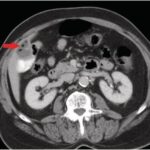Crohn’s disease, a chronic inflammatory bowel disease (IBD), is characterized by inflammation of the digestive tract. Diagnosing Crohn’s disease can be complex because its symptoms often overlap with those of other conditions. Therefore, a thorough differential diagnosis is crucial to ensure accurate diagnosis and appropriate management. This process involves systematically ruling out other diseases that present with similar clinical features.
Conditions That Mimic Crohn’s Disease
Several conditions can present with symptoms resembling Crohn’s disease, making differential diagnosis essential. These include:
Ulcerative Colitis
Ulcerative colitis (UC), another form of IBD, shares many symptoms with Crohn’s disease, such as abdominal pain, diarrhea, and rectal bleeding. However, UC typically affects only the colon and rectum, with continuous inflammation, whereas Crohn’s can affect any part of the digestive tract, often with patchy inflammation. Colonoscopy and biopsy are crucial in differentiating these conditions, focusing on the distribution and microscopic features of inflammation.
Irritable Bowel Syndrome (IBS)
Irritable bowel syndrome (IBS) is a functional gastrointestinal disorder characterized by abdominal pain, bloating, and changes in bowel habits (diarrhea, constipation, or both). While symptoms can overlap with Crohn’s, IBS does not involve structural inflammation of the bowel. The absence of inflammation on endoscopic and histological examination helps distinguish IBS from Crohn’s disease.
Celiac Disease
Celiac disease is an autoimmune disorder triggered by gluten ingestion, leading to damage to the small intestine. Symptoms like diarrhea, abdominal pain, and weight loss can be similar to Crohn’s. Serological tests for celiac disease (tissue transglutaminase IgA antibodies) and upper endoscopy with duodenal biopsies are essential to rule out celiac disease in patients presenting with Crohn’s-like symptoms.
Infectious Colitis
Infections caused by bacteria (e.g., Salmonella, Campylobacter, C. difficile), viruses, or parasites can cause colitis with symptoms such as diarrhea, abdominal cramps, and fever, mimicking Crohn’s disease exacerbation. Stool studies to identify pathogens are crucial in the differential diagnosis, especially in acute presentations.
Diverticulitis
Diverticulitis, inflammation or infection of diverticula in the colon, can present with left lower quadrant abdominal pain and changes in bowel habits, sometimes resembling colonic Crohn’s. CT scans of the abdomen and pelvis are helpful in diagnosing diverticulitis and differentiating it from Crohn’s, particularly in older patients.
Key Differentiating Factors in Diagnosis
Distinguishing Crohn’s disease from other conditions relies on a combination of clinical evaluation, endoscopic findings, histological analysis, and imaging studies.
Location and Pattern of Inflammation
Crohn’s disease can affect any part of the digestive tract from the mouth to the anus, often with “skip lesions” (patchy inflammation). Ulcerative colitis is limited to the colon and rectum with continuous inflammation. Endoscopy plays a vital role in assessing the location and pattern of inflammation.
Microscopic Features
Histopathology from biopsies taken during endoscopy is critical. Crohn’s disease is characterized by transmural inflammation, granulomas, and fissuring ulcers, while UC typically shows mucosal inflammation limited to the superficial layers with crypt abscesses.
Symptom Profile
While both Crohn’s and its mimics share common symptoms, certain features may be more suggestive of specific conditions. Perianal disease (fistulas, abscesses) is more common in Crohn’s. The presence of extraintestinal manifestations (e.g., eye inflammation, skin lesions, joint pain) can also support a diagnosis of IBD, but are not specific to Crohn’s and can occur in other inflammatory conditions.
Diagnostic Tests
Besides endoscopy and histology, other tests are crucial in differential diagnosis:
- Stool studies: To rule out infectious colitis.
- Serological tests: For celiac disease and to assess inflammatory markers (CRP, ESR).
- Imaging (CT, MRI, Ultrasound): To evaluate the extent and complications of inflammation and to exclude other conditions like diverticulitis or abscesses.
- Capsule endoscopy or balloon-assisted enteroscopy: To visualize the small bowel in cases of suspected small bowel Crohn’s.
Conclusion
Differential diagnosis of Crohn’s disease is a multifaceted process requiring careful consideration of clinical presentation, endoscopic findings, histology, and other investigations. Accurately distinguishing Crohn’s from other conditions like ulcerative colitis, IBS, celiac disease, infectious colitis, and diverticulitis is essential for guiding appropriate treatment strategies and improving patient outcomes. A comprehensive approach, integrating various diagnostic modalities, is key to achieving diagnostic certainty and effective management of patients with suspected Crohn’s disease.
